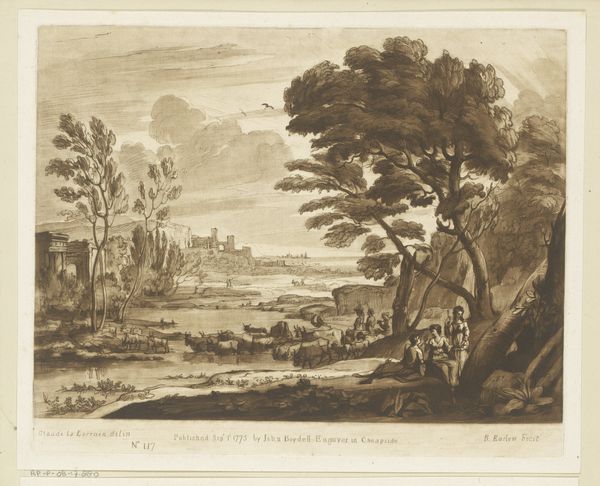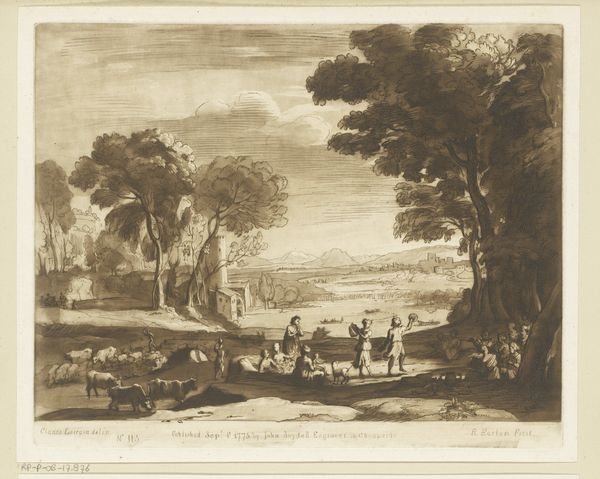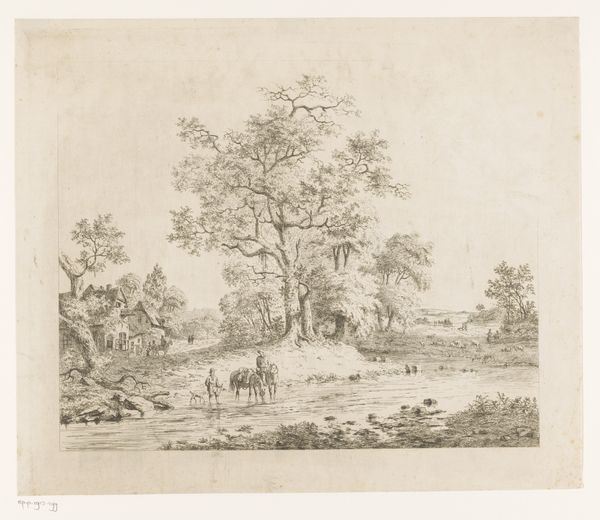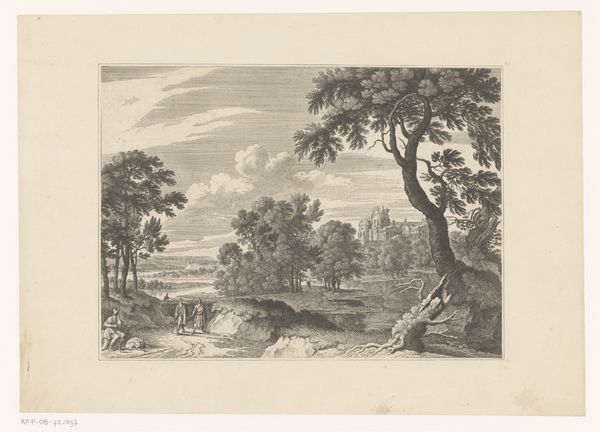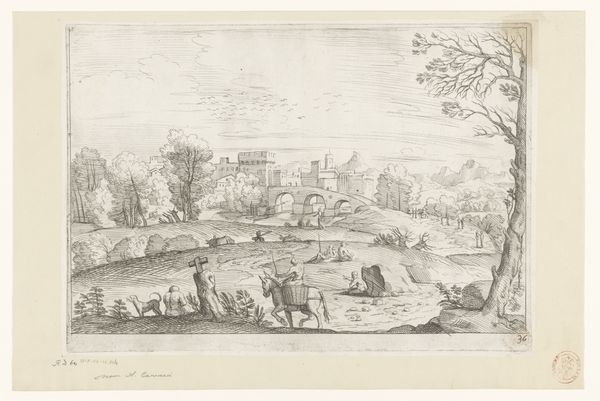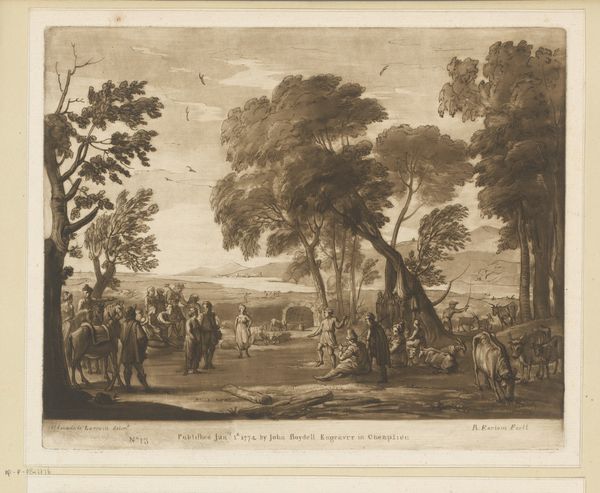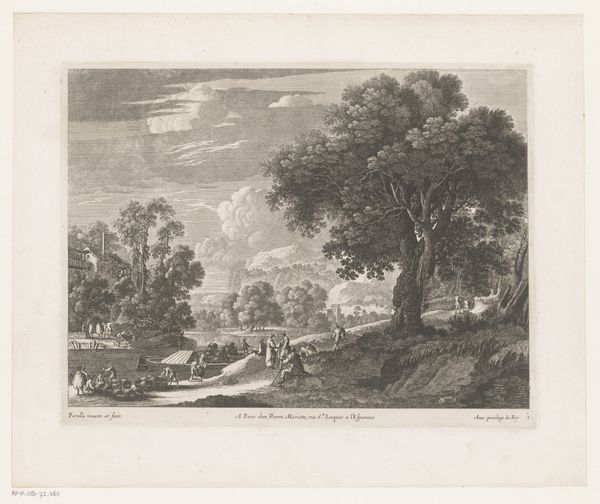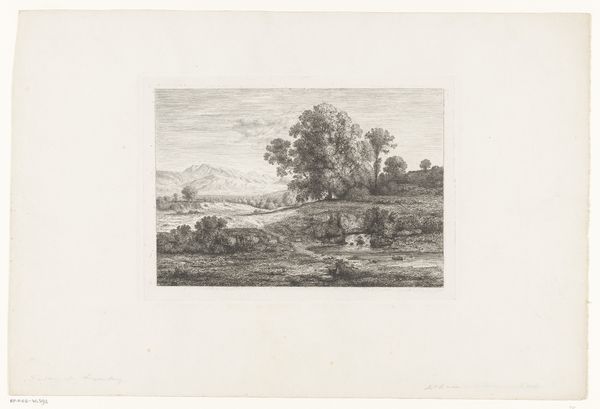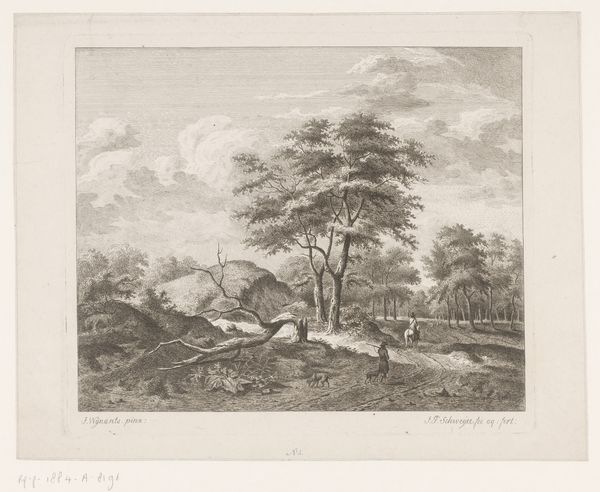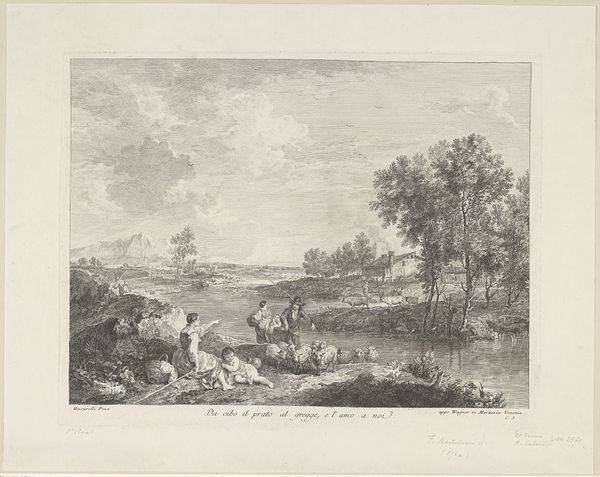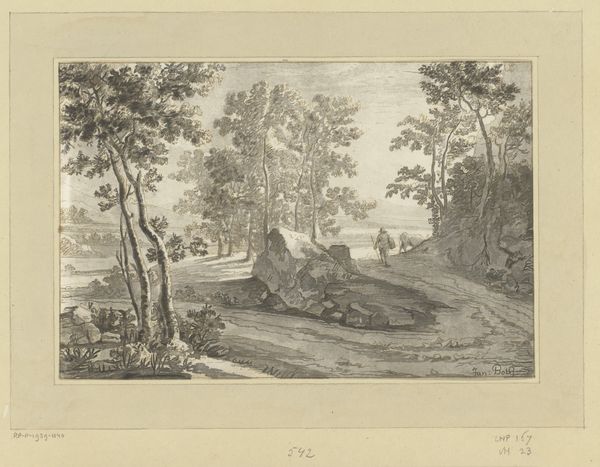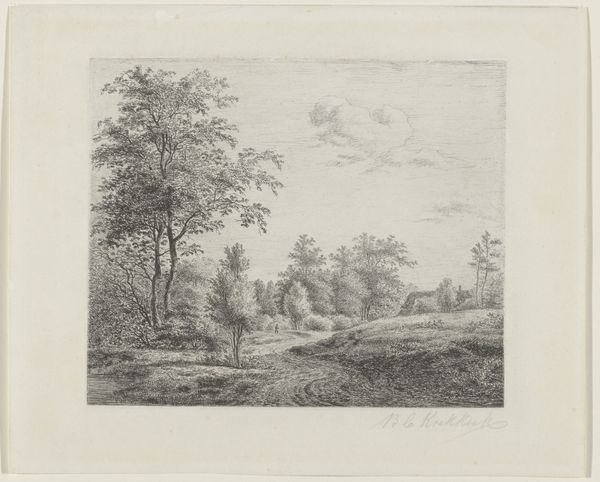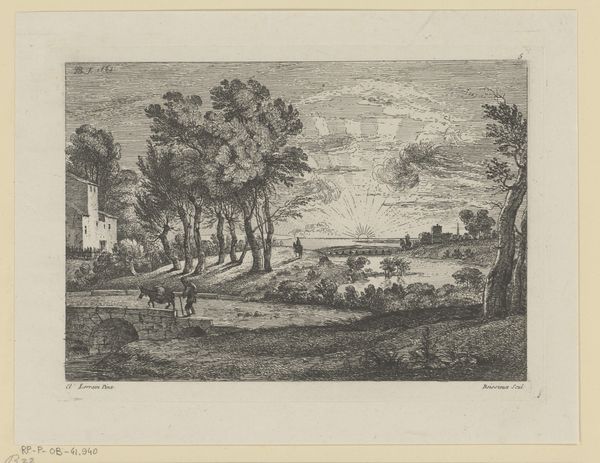
print, etching, engraving
#
baroque
#
dutch-golden-age
# print
#
etching
#
landscape
#
etching
#
figuration
#
genre-painting
#
engraving
Dimensions: height 285 mm, width 402 mm
Copyright: Rijks Museum: Open Domain
Editor: Here we have "Landscape with Riders" by Jean Pesne, created sometime between 1666 and 1695. It's a delicate print, an etching really, and the detail is just incredible. There’s a sense of organized activity with the riders contrasted by the placid setting. What stands out to you most about this piece? Curator: For me, it’s about the process. Etching during the Dutch Golden Age wasn’t just about representing landscapes, it was a sophisticated mode of production. Think about the labour involved, the specialized knowledge to transfer the design onto the plate, the access to materials and tools, it reveals the skilled labor needed to produce this image. The artist isn't just creating an aesthetic experience, but engaging with a whole system of material production and distribution. How does this compare to mass produced images of our time? Editor: That's a compelling point. When you consider the specialized labor of the time, it’s fascinating to think about how accessible such images may have been to a broader public. Did that level of skilled labor have a limiting impact? Curator: Absolutely! The cost of materials, the workshop setup, and the distribution networks would definitely have limited access, positioning these prints as valuable commodities within a developing market. Consider, too, who *owned* the materials and tools. Was Pesne working independently or under the patronage of someone who controlled those means of production? These considerations change the context and impact the reception of the artwork. Editor: I hadn’t really considered that economic and social layer before. Curator: It shifts the entire conversation, doesn't it? Editor: Definitely. Instead of seeing a nice landscape, I'm considering the conditions that allowed it to be produced and consumed. Thanks, it makes a huge difference! Curator: My pleasure! Thinking about the “how” and the “why” enriches our understanding immensely.
Comments
No comments
Be the first to comment and join the conversation on the ultimate creative platform.
